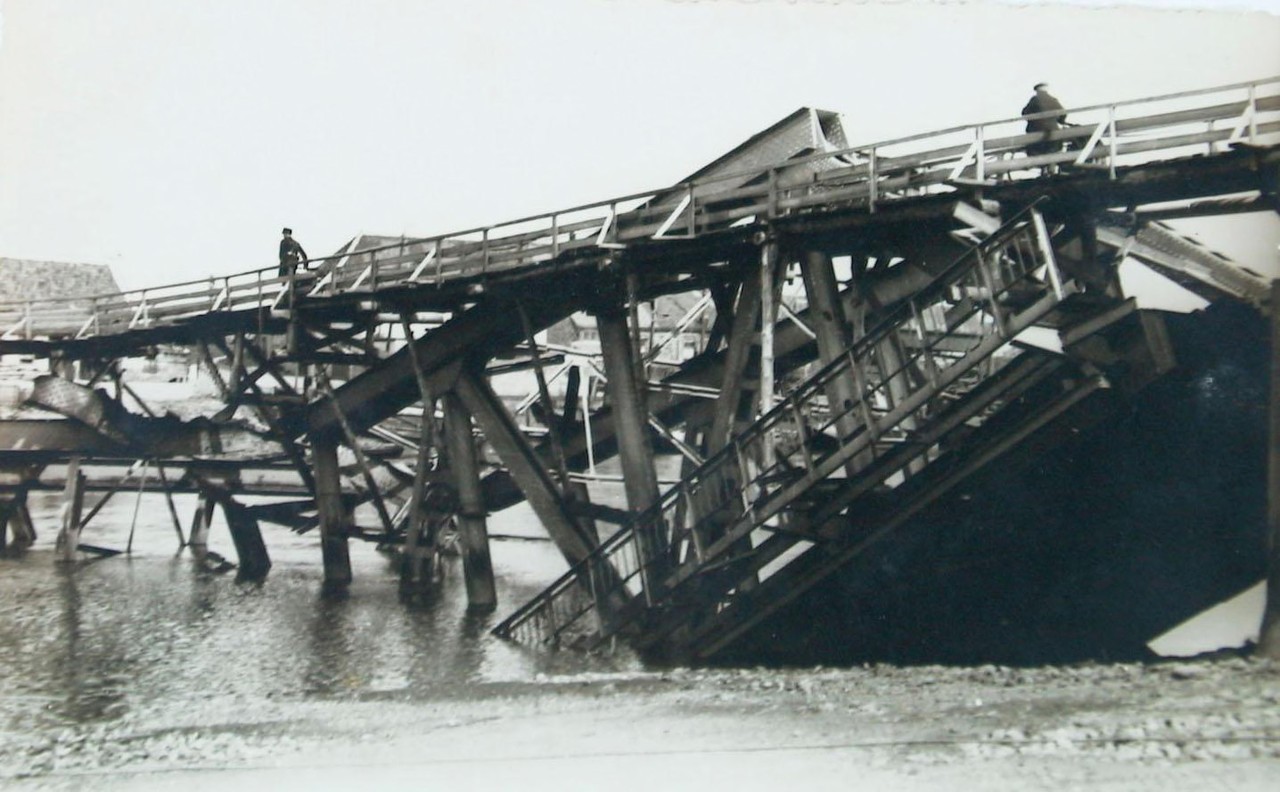By 30 October, the time had come. Just after midnight, a motorbike approached from Halsteren, crossed the bridge, and informed the three German soldiers that it was time to blow up the bridge. Although the resistance commander had sent scouts to the mainland to find out when the Allied liberators would arrive, he had no news. The safety of Tholen’s residents, who could be in grave danger from potential German reprisals if the resistance would block the bridge's destruction, was more important to him than the bridge itself. Frustrated, the resistance fighters could only watch from their hiding place as the bridge sections fell into the water of the Eendracht due to the Germans' actions.
After this eventful night, the sound of explosions echoed through the streets of Tholen town on Monday morning, 30 October, at 10:30 am. Fortunately, the shelling stopped after just a few shells. In the silence that followed, the residents heard shouts from the area around the Eendracht crossing. “They’re here, on the other side! They’re here with our flag!” A large group of people gathered by the water’s edge. Some members of the resistance rowed across to greet the liberators. The enthusiasm of the Tholen residents was so great that everyone wanted to join them in the boat to witness this special moment.
On the opposite side, three Canadians were waiting. They were accompanied by one of the scouts that the resistance commander of Tholen had sent to the mainland a few days earlier. The Canadian soldiers were from the Argyll and Sutherland Highlanders. They had come to Tholen on their own initiative, as their battalion had no orders to liberate the town that day. It seemed the young Canadian soldiers stationed in Halsteren were in the mood for a bit of adventure and were easily persuaded to accompany the resistance fighter when he returned home, to Tholen.
As the rowing boat approached the Tholen shore, the bystanders spontaneously started singing the national anthem. The emotions ran high. Amid cheers, shouts, and tears of joy, the three liberators were lifted onto the residents' shoulders and carried into the town. A joyful, singing crowd followed the laughing Canadians. They were officially received at the town hall, after which the festive crowd danced back towards the harbour. After this small preview of the real liberation celebration, the three soldiers left for Brabant just before noon.
Meanwhile, the Tholen resistance had pursued the German soldiers from Tholen to the ferry at Oud-Vossemeer, where shots were exchanged. There was no festive mood here, and in the days that followed, these skirmishes led to two resistance fighters losing their lives.
It wasn’t until the afternoon of Tuesday, 31 October, that the official Canadian liberators arrived. Large armoured vehicles appeared on the shore on the Brabant side of the Eendracht. At the resistance headquarters in Tholen town, an officer from the XII Manitoba Dragoons, who spoke Dutch, entered. The officer took custody of five Armenian prisoners of war and departed, but before leaving, he reassured the people of Tholen town that they wouldn’t see any more soldiers for the time being: the town did no longer play a role in the Battle of the Scheldt.
